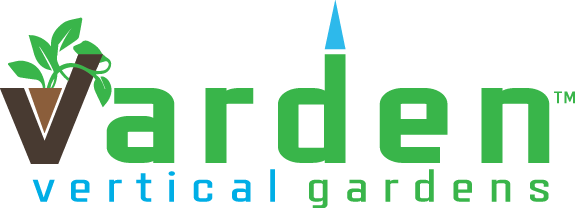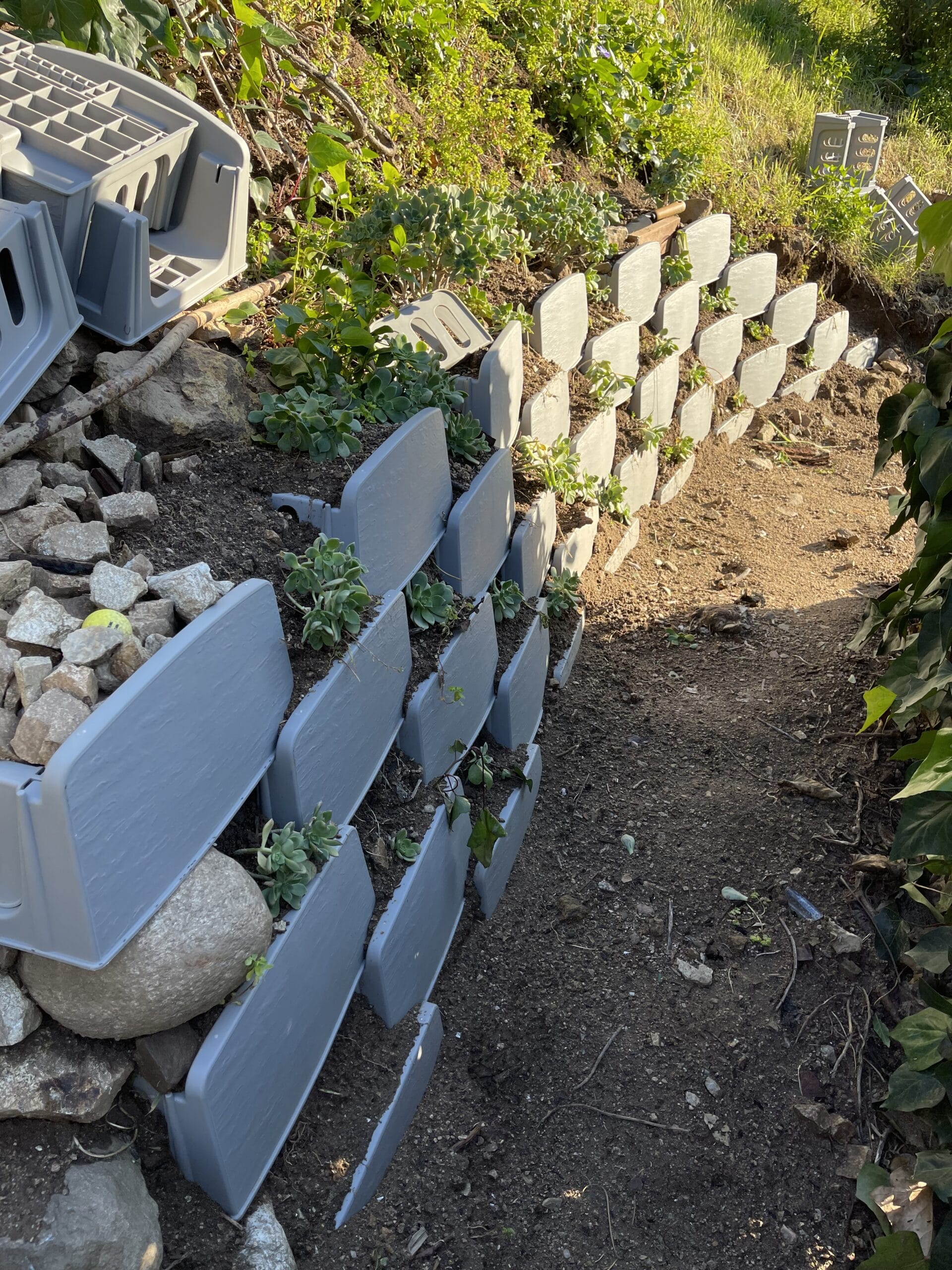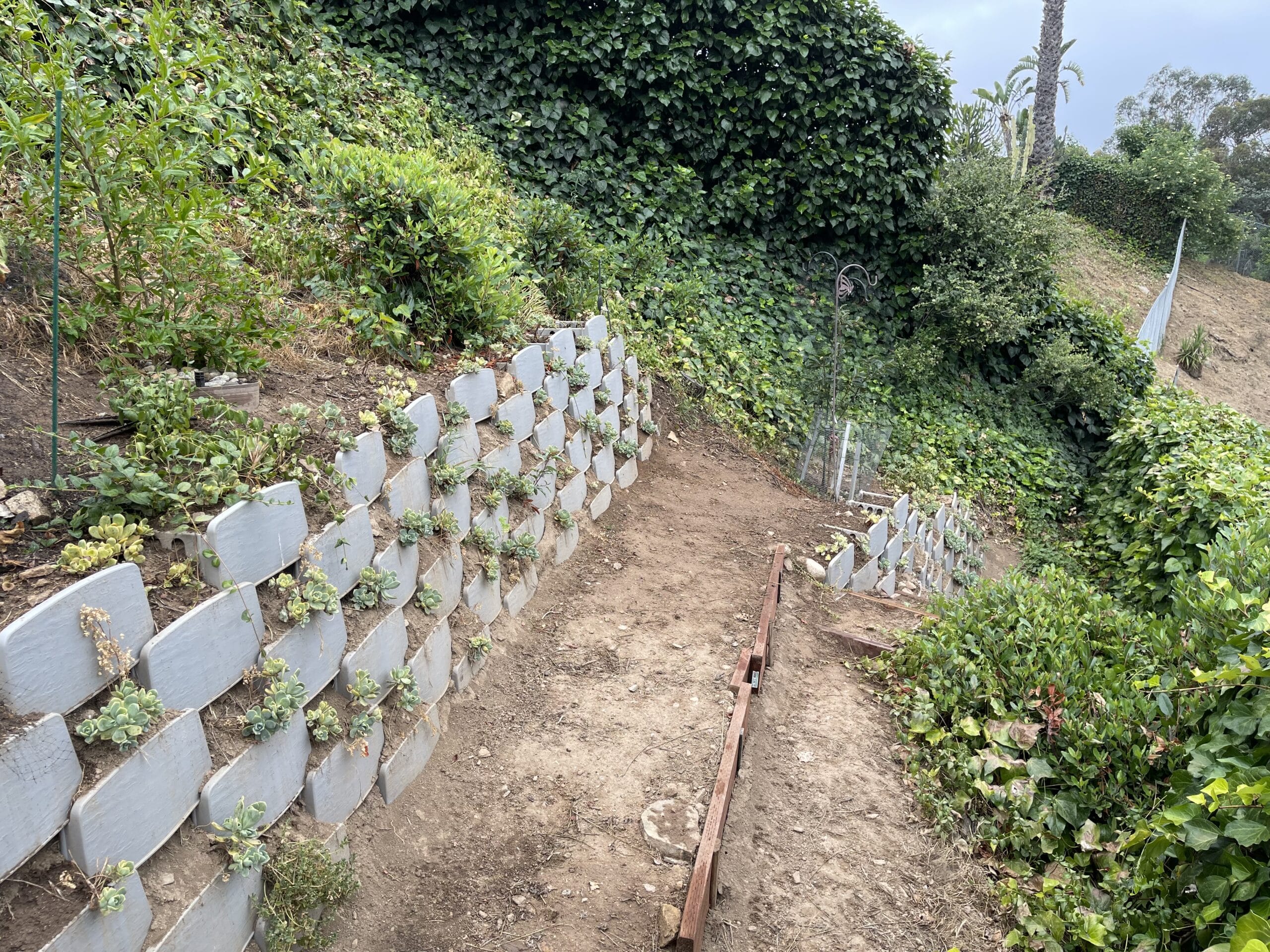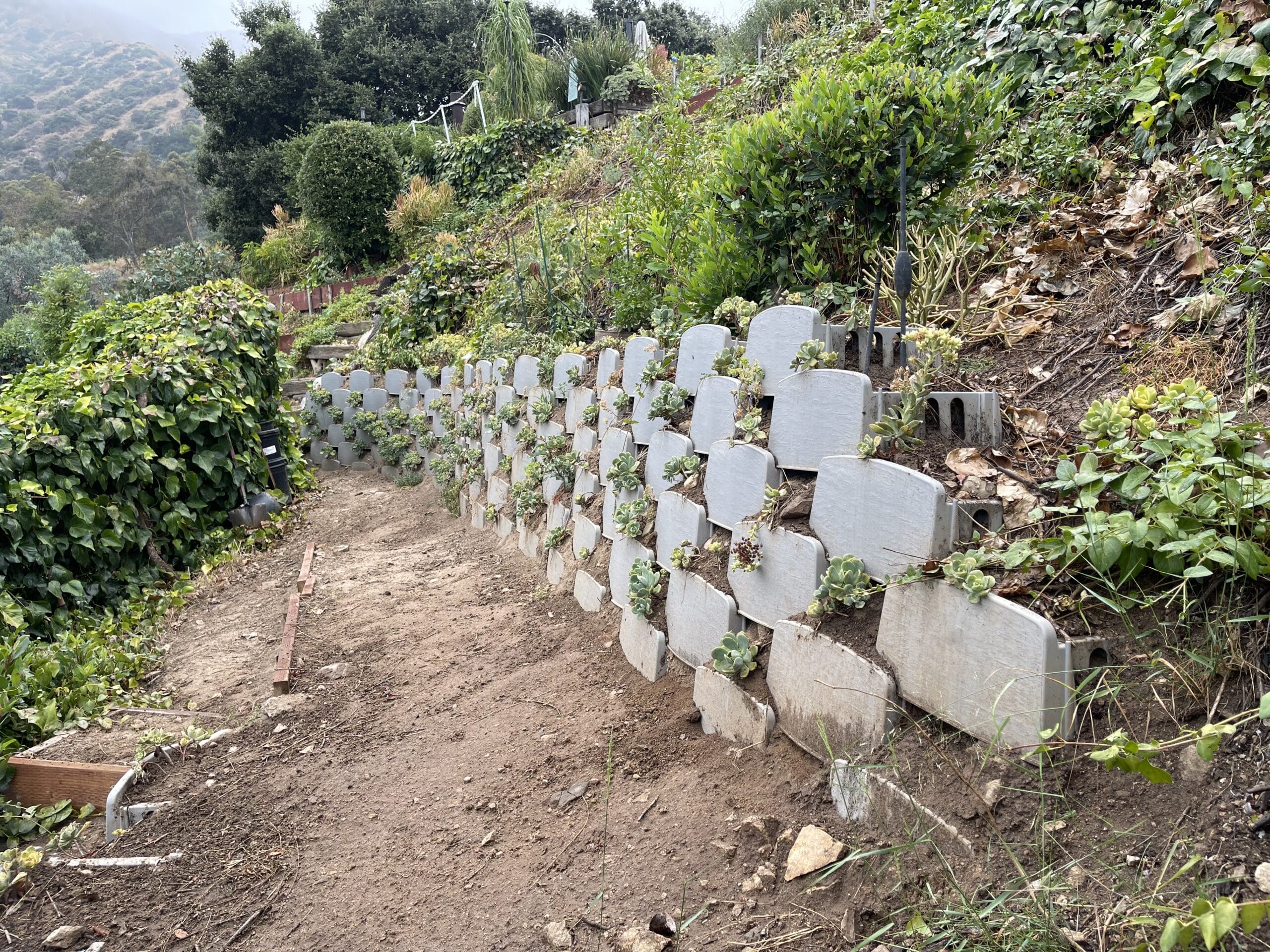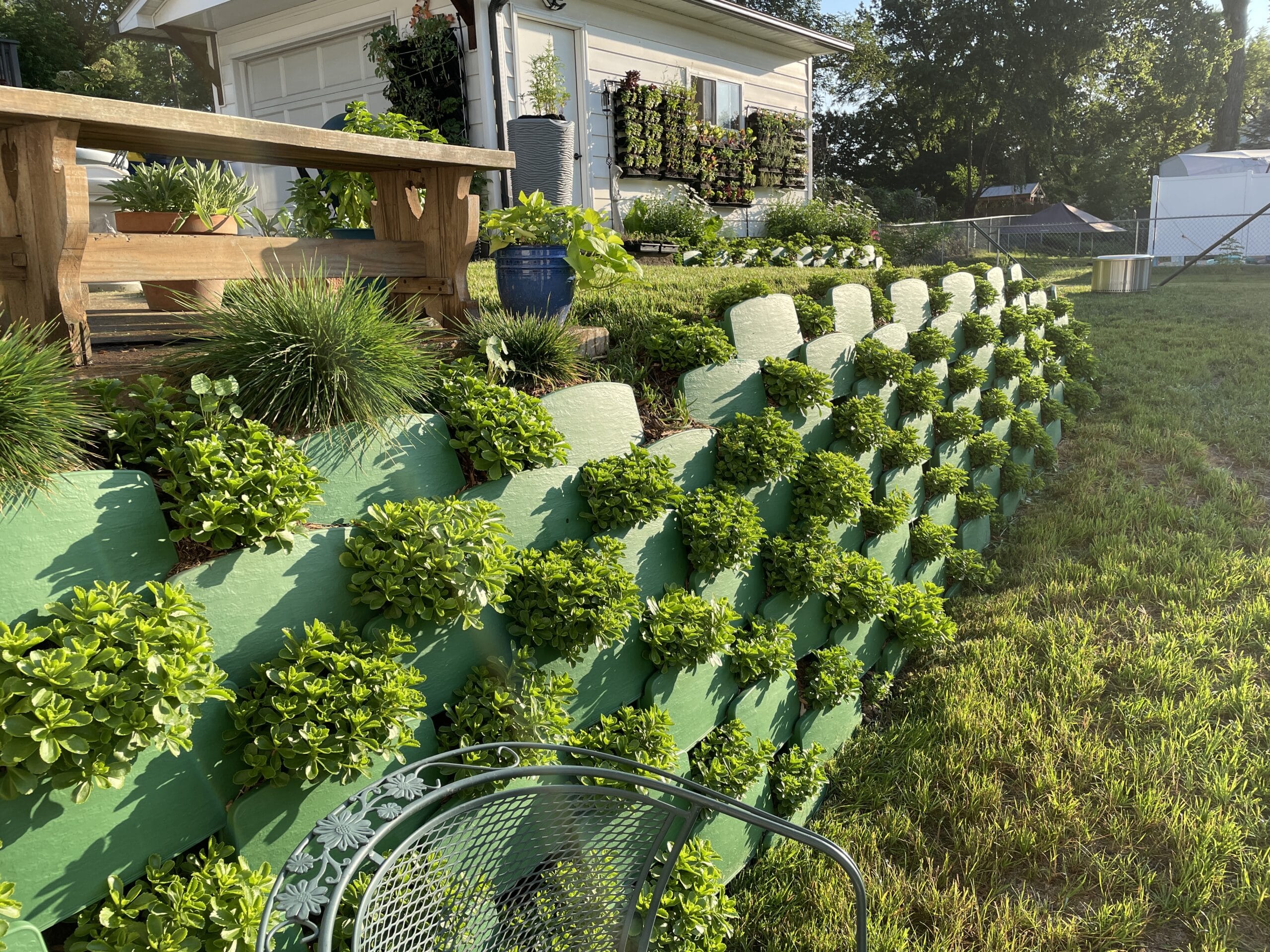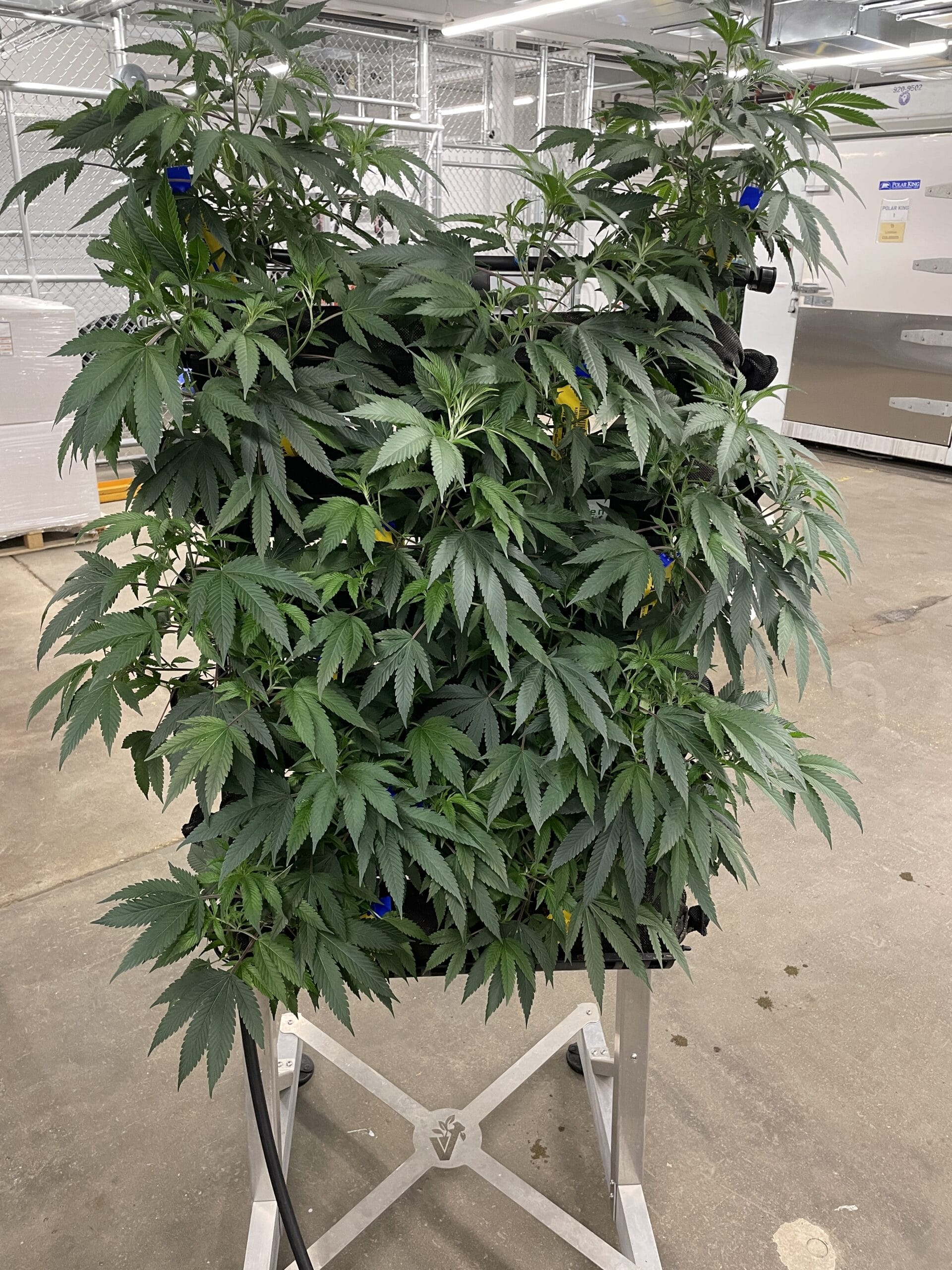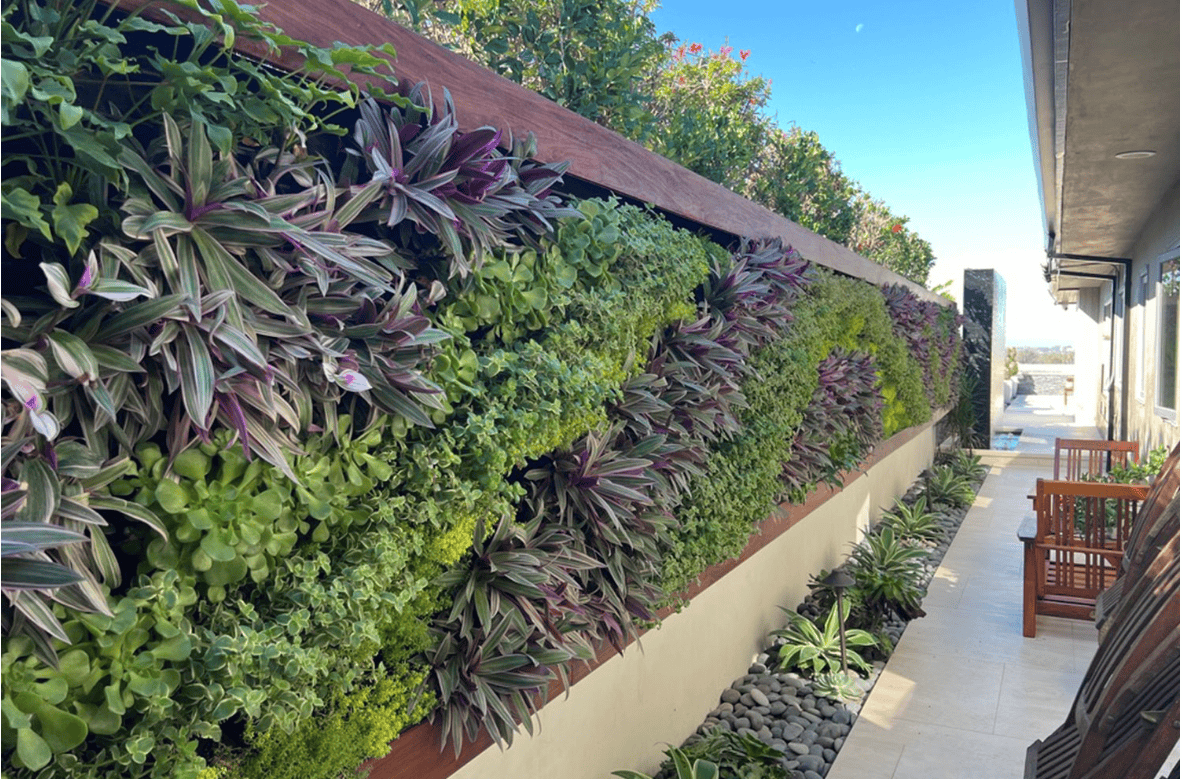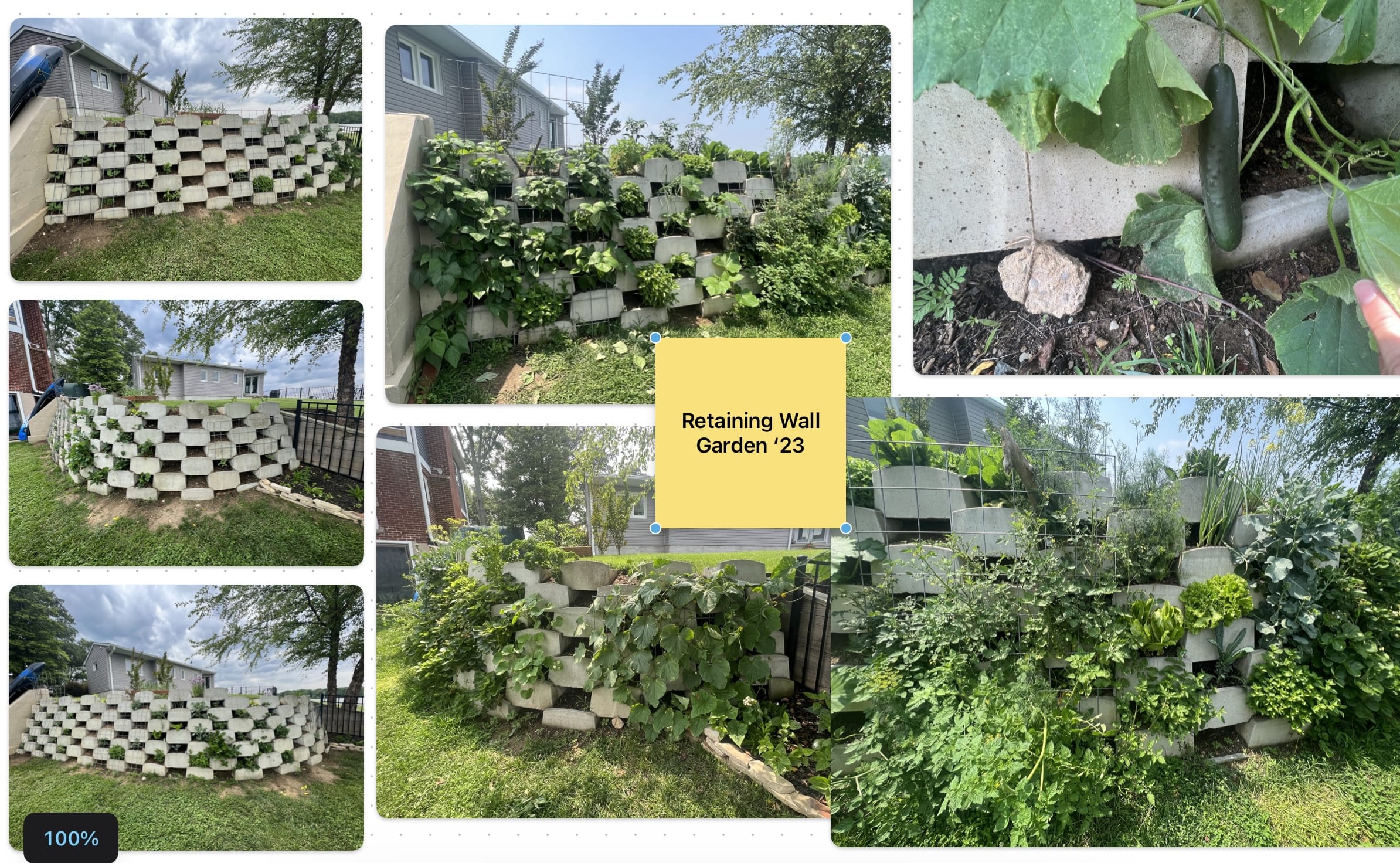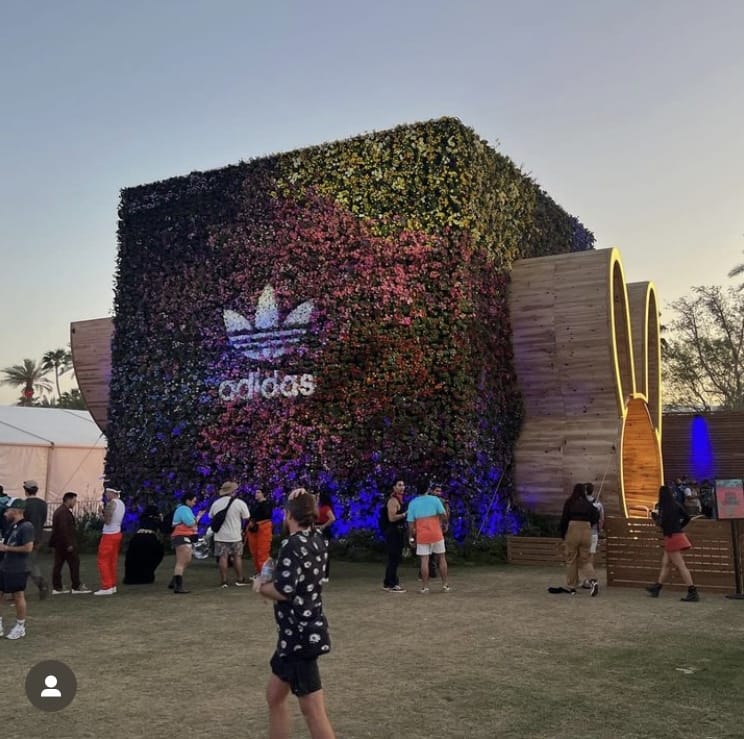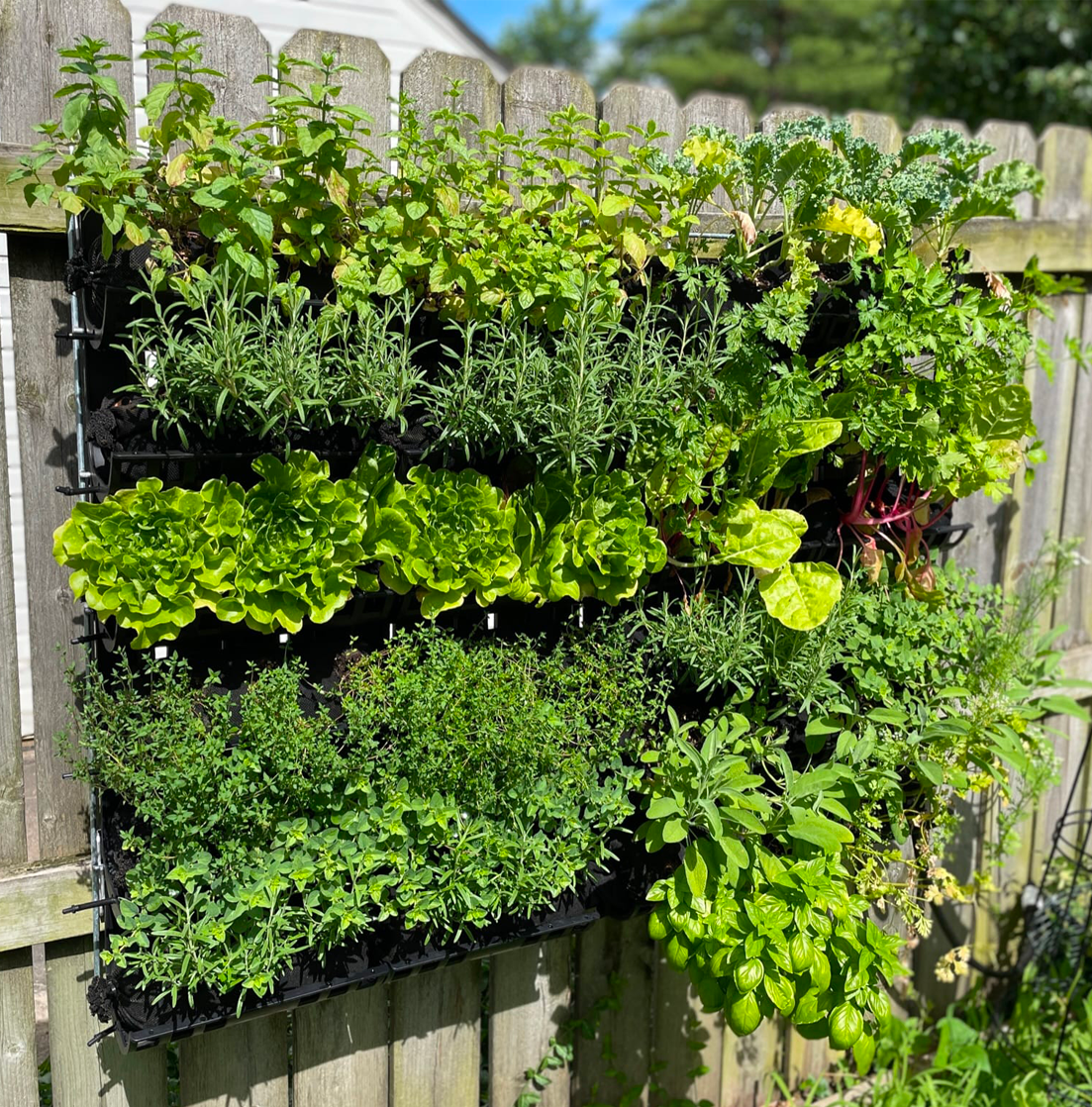Living retaining wall project review:
We try to stay close to the customer so that we can be readily available to help with any information needed. Most of the time our customers know exactly what they are doing and they need little in the way of Technical Support from us. It is great to form relationships with them and to see what they create with our vertical garden and living retaining wall products.
One of our recent retaining wall block customers in California submitted a few photographs of their project. That prompted me to follow up with a phone call to discuss the project in greater detail. What I quickly noticed from the photographs is that our customer was building a retaining wall in a very difficult to access position on a hillside. That made me want to know more and I’m glad that he was open to a bit of conversation about the project.
Quote from the customer:
From Jason:
“Issue #1 is landslide mitigation; Issue #2 is back slope stabilization and access improvement”.
“In both cases I enjoyed using your product and find it extremely helpful to operate on my own to work into the existing conditions with minimum disturbance to the slopes. Awesome concept for the retaining wall system”.
Slope Repair:
Our customer, Jason, had a vegetated slope behind his house which had experienced some slope failure or sliding. You can see that in one of the photographs above. It was easy to see that it would have been very difficult to get heavy, full-size, concrete retaining wall blocks to this position. Our customer had professional experience in the landscape design world and therefore knew exactly what he needed to do, if he could just get his hands on a product that would allow him to accomplish his goals.
Light Weight Makes It Possible:
You can easily see through the photographs that he constructed some short retaining wall terraces with our Varden Retaining Wall Blocks in gray color. This was a project that involved quite a bit of handwork and obviously he was not concerned about some digging and backfilling. Having a full-size retaining wall block that only weighed 3 pounds made it easy to move an inventory of block into position as he constructed the terraces. Most of the weight of our Varden living retaining wall blocks comes from having their large pocket filled with soil. In this case Jason had to dig out a base coarse trench to set the alignment of the wall, and then it was just a matter of laying out the blocks, backfilling each course and then stacking the next before backfilling again. It looks like he did a fabulous job and the walls looks nicely filled with soil and everything seems well compacted all around. We have a good playlist on YouTube for more on this.
Plants Complete It:
Root structure from the plants in the facing will further tie all of the blocks together, prevent erosion and stitch them into the hillside to become part of the landscape. Our favorite part of living retaining walls is that they don’t just separate the landscape, and really become the landscape as they grow-in and cover over with vegetation. See previous blogs for more on this. Specs and Details. FAQ
Looking at the various angles in the photographs, you can see that there are multiple retaining wall terraces and some of the pictures show how the blocks were planted with locally appropriate succulents. I hope that Jason will send us some follow-on photos after the succulents begin to grow the wall over and I suspect that somewhere within the next 12 months, the actual structure of the retaining wall will disappear behind lush vegetation.
This project is a great blending of structure and environmental service, and one that we are proud to offer!
